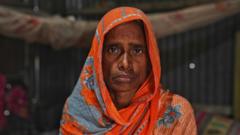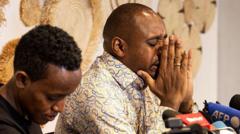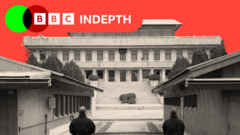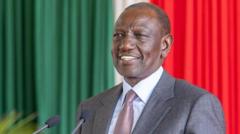The Afghan government's prohibition of education for girls over 12 has driven them towards madrassas, where some alternative subjects are taught, yet controversy over the quality and ideological content of this education persists. While some students strive to hold onto their dreams of higher education, critics warn of the lasting impacts on Afghan society and the potential for radicalization.**
Afghan Girls Navigate Education Ban Through Madrassas Amidst Taliban Restrictions**

Afghan Girls Navigate Education Ban Through Madrassas Amidst Taliban Restrictions**
As Afghan girls continue to face a ban on schooling imposed by the Taliban, madrassas emerge as their primary option for education, with both pros and cons in the context of cultural and political challenges.**
In Afghanistan, the education landscape for girls has drastically changed since the Taliban regained control in 2021. Amina, a 15-year-old aspiring doctor, symbolizes the plight of over one million girls barred from school due to stringent new regulations. Her dreams of pursuing medicine were crushed when she learned that the Taliban had discontinued education for girls over 12. “It was a very bad feeling,” she recalls, expressing both sorrow and frustration at the loss of her opportunities.
Currently, the new academic year marks the fourth consecutive year of this ban, and while some families resort to private tutoring in various subjects, many must turn to madrassas—religious educational institutions—as a substitute for formal schooling. Despite providing a semblance of education, madrassas face criticism for potentially indoctrinating students with Taliban ideologies. According to a report by the Afghanistan Centre for Human Rights, these institutions allegedly emphasize extremist content while enforcing strict gender roles.
Amina participates in classes at the Al-Hadith madrassa, founded by her brother Hamid in response to the educational crisis. Hamid reflects on his sister’s challenges, indicating that rekindling her educational journey has positively impacted her well-being. Meanwhile, some madrassas, like Shaikh Abdul Qadr Jilani, have introduced academic subjects alongside traditional religious teachings. Yet, critics differentiate such offerings from a comprehensive educational structure, emphasizing that they can never replace the essential role of mainstream education.
Hadiya, a recent graduate and now a teacher at another madrassa, exemplifies the limited academic avenues available. She yearns for a future where subjects like chemistry and physics are prioritized rather than sidelined. In contrast, Safia, another madrassa instructor, believes that religious education is crucial, nevertheless admitting that it cannot fully compensate for the lack of broader educational opportunities for women.
As the international community, led by UN Special Rapporteur Richard Bennett, raises alarms about the implications of this limited education system, the Taliban continues to assert that educational institutions will reopen under certain conditions—conditions that remain unfulfilled.
Despite the severe challenges placed before them, students like Amina maintain hope. “I still believe that one day the Taliban will allow schools and universities to reopen,” she asserts, vowing to pursue her dream of studying medicine. This insistence on hope amidst adversity highlights the resilience of Afghan girls even as their future remains uncertain.



















